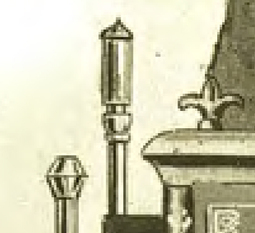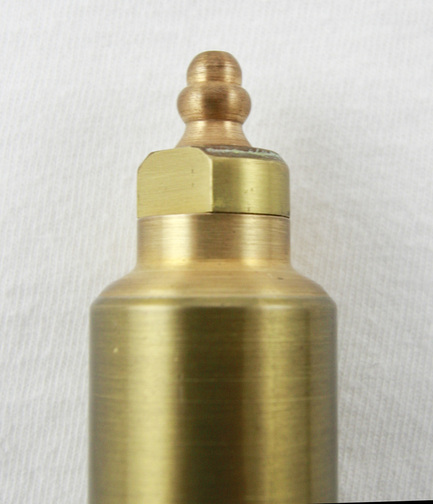Dunbar Chime Whistle
by
Bruce Wm. Anderson
Our best information is that four whistles were used on the Dunbar steam operated popcorn wagons. In the early years, we can see three different kinds of Plain Whistles used in the catalog pictures. The earliest pictured Plain Whistle has its valve located underneath the whistle. It was used on the more expensive machines (1903/1904 Catalog) (Picture 1). The second Plain (?) Whistle was used on the Horse Wagon No. 1 and we are unsure where the valve was located (1903/1904 Catalog) (Picture 2). The third Plain Whistle was used on the inexpensive machines and has the valve located on the top of the whistle (1903/1904 Catalog) (Picture 3). The Chime Whistle and valve is by far the most common whistle used by Dunbar. This whistle shows up for the first time in the 1906 catalog (Pictures 4, 5 & 6). It is a three chamber whistle and the valve is located directly below the chime whistle. This whistle’s sound can be tuned by loosening the nut on the top of the whistle (Picture 7) and screwing the outer bell cover of the whistle up-and-down. This whistle was made by Dunbar & Co and can only be identified by removing the outer bell cover of the chime whistle and looking for the D&C identification on the cast inner portion of the chime (Picture 9). The valve of this whistle has a ¼ inch female national pipe thread (Picture 8). The bell is 1 inch in diameter. Sash chain was frequently used to sound the Whistles (Picture 9). Occasionally, a solid rod with a looped end was used to sound the whistle.
Picture 6
Dunbar Chime Whistle - Note D on Valve
Dunbar Chime Whistle - Note D on Valve
Picture 9
Dunbar Chime Chamber Marked with D & CO
Dunbar Chime Chamber Marked with D & CO
Picture 10
Sash Chain used with Chime Whistle
Sash Chain used with Chime Whistle










